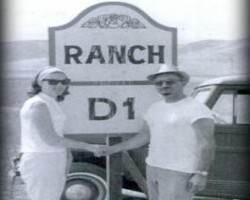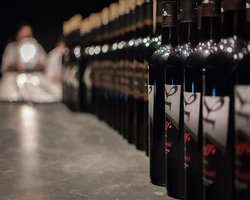February 1, 2018

Love is always in the air in Temecula Valley! This month, your local wineries have especially amorous offerings set against the backdrop of the most beautiful vineyards in Southern California.
Avensole Winery
Valentines Couples Dinner / February 9 & 10 / 11am-9pm / $150 per couple / Indulge your senses with a romantic prix-fixe Valentines menu, created especially for the occasion. Enjoy an enchanting evening on our beautiful outdoor terrace, where the scene is set for romance with live entertainment and an unforgettable gourmet four course culinary delight for two. Dinner includes one glass of Explore wine or beer per person / Please call our Concierge to make reservations: 951-252-2003 x301
Valentines Couples Dinner / February 11 & 14 / 11am-8pm / $150 per couple / Indulge your senses with a romantic prix-fixe Valentines menu, created especially for the occasion. Enjoy an enchanting evening on our beautiful outdoor terrace, where the scene is set for romance with live entertainment and an unforgettable gourmet four course culinary delight for two. Dinner includes one glass of Explore wine or beer per person / Please call our Concierge to make reservations: 951-252-2003 x301
Hosted Tour & Wine Tasting /Available on Sunday of each the month / 2pm-3:30pm / For every adventure, there is discovery, for every unique place, there is a story. Take a guided journey through our lush vineyards and experience our rich heritage and handcrafted Avensole wines / Cost. $35 / Reservations required. Please call 951.252.2003 x312 to reserve.
Gourmet Cheese Artisanal Tour & Wine Tasting / Available on Friday of each month / 12pm / For the ultimate Wine Country experience, delight in an educational tour through our picturesque vineyard vistas and conclude this tour with a culinary treat of artisanal wine pairings featuring 7 Avensole wines / Cost: $75 / Reservations required online at link: http://www.avensolewinery.com/res-369934
Briar Rose Winery
Taste of Enchantment Valentine’s Dinner / February 14 / 6:30pm / Enjoy an elegant four-course dinner prepared by Chef Rivas at Briar Rose Winery / Cost: $220 per couple all-inclusive / To book your reservation visit: chefjrivas.com and click reservations / For additional questions, text or call Jakota Rivas at 858-740-7503
Baily Winery
Valentine Candlelight Tasting for 2 / February 10 & 11 / 11:30am-3:30pm / Seating’s every hour / $35 per person / Special Cabernet Franc and Port tasting. Charcuterie and chocolate plate for two / Seating is extremely limited. Tasting will take place at Baily Estate Tasting Room located on Pauba Road Call today for reservations at 951.972.9768
Estate Library Tasting / Every Thursday-Sunday / Available 11am-4pm / Enjoy exclusive library tasting of 5 different vintages (varietal will vary monthly). Tasting will take place at Baily Estate Tasting Room located on Pauba Road / Tours are available upon request / For reservations and pricing information please call Lisa at 951-972-9768.
Dog Day Sundays / Every Sunday at Carol’s Restaurant / 11:30a-2:30p / Bring your well-mannered pooch to lunch, doggie treats and special menu items / Live acoustic music on the patio / For more information please contact the restaurant at 951.676.9243
Bel Vino Winery
Valentine’s Day Sweetheart Dinner / February 14 / 6:00 to 9:00 pm / Guests are greeted with a glass of champagne and an amuse bouche. Dinner includes 4 courses of savory dishes paired with our award- winning wine. Check-in beginning at 5:30 pm / Reservations Required – Please call 951-428-2358 or email Elizabeth@belvinowinery.com for reservations / $99.95 per person for Wine Club Members / $124.95 per person for non-members – Prices include tax & gratuity.
Friday Nite Live at Bel Vino / Every Friday 6p-10p / No Cover / Wine & Beer / Bel Vino Bistro open until 9 pm/ No outside food or drinks allowed.
Live Band every Saturday and Sunday / 12pm to 4pm /Admission is always free / Bands play on our Hilltop Terrace Stage. For a list of scheduled performers please visit https://www.belvinowinery.com/events/
Callaway Vineyard & Winery
Valentine’s Dinner / February 14 / Seating’s 5-5:30 & 7-7:30 / Share a romantic dinner with your loved one this Valentine’s Day at Meritage at Callaway. Executive Chef Josh Diamond is offering guests an enchanting, four course dining experience, while enjoying a live performance by Danielle Taylor / Cost: $85 non-members, $76.50 members, per person, plus tax and gratuity. For Reservations Call: 951.587.8889
Prix Fixe Friday & Sunday at Meritage / 5pm to 8pm / For $35 guests may enjoy a starter, an entrée and a dessert / Live Music offered on Friday nights / Reservation is not necessary. For menu information call 951.587.8889
Brunch Specials every Sunday at Meritage / 11am / Cost is $25 / Includes a mimosa with fresh squeezed orange juice, entrée and dessert. All food from Meritage is farm-to-table, either grown on property in restaurant garden or locally outsourced.
Callaway Winery Tours offered daily / 11am and 1pm / Tour only, $10 per person. Tour with tasting, $25 – tour includes 1 tank sample, 1-barrel sample and 4 additional tastes at the Tasting Bar / Reservations not necessary, but for 10 or more highly recommended / For more information call 951.676.4001
Live Music at the Courtyard Patio / Every Saturday from 1pm to 5pm / Please check our website for a list of scheduled performers.
Carter Estate Winery and Resort
Elegant Food & Wine Pairing / $40pp / Available Mid-week 1pm and 3pm; Weekends 1pm and 3pm Reserve your place for an indulgent wine and food pairing designed to tantalize the senses. Guests enjoy five specially-selected Carter Estate Winery wines paired perfectly with a variety of cured meats, artisan cheeses and accompanied with season accoutrements. Each pairing last approximately 90 minutes and is limited to just eight participants to allow for one-on-one interaction / For reservations call today: 844.851.2138
Cougar Vineyard & Winery
11th Annual Super Chili Bowl / February 4 / 3:00-8:00pm / All of you aspiring and talented cooks start working on your awesome chili! Chili competition kicks off at 3pm. Only 10 competitors allowed and last year’s winner, Myrna, will be defending her title! Is your chili better than hers? Join us for food, wine, beer & good times. Pricing includes chili tasting, snacks, wine or beer. Price increases $5 day of event. / Competitors $15, Wine Club $25, Non-Wine Club $30 / No need to arrive early the day of, you can pick out your reserved table for every 4-6 tickets you purchase / This is an adult event, 21 and older only please. Email events@cougarvineyards.com to select your table. Please inquire regarding official rules for competitors.
Friday Night Live Music / 5pm-8pm / Happy Hour 7-8p two-for-one glasses of wine / Free to the public
Sunday Live Music / 2:00-5:00pm / Free to the public / For a list of scheduled performers please visit www.cougarwinery.com.
Danza del Sol Winery
Valentine’s Dinner / February 14 / 6:30pm / $115.00 – $125.00 / Create a truly memorable Valentine’s Day experience with Danza del Sol Winery! The evening begins with a sparkling wine reception in our Barrel Room and is followed by a tantalizing 3-course dinner in our Club House. Chef Volker Lutz expertly prepared the menu and each course is paired with a spectacular Danza del Sol Wine. Live jazz music from Stephen Vaughan / For reservations please visit our website at www.danzadelsolwinery.com. One king table for seating; private seating not available.
Live Music on the Patio at Danza del Sol / Every Saturday and Sunday beginning at 1:00pm / Enjoy great wine and great music! / Please check our website www.danzadelsolwinery.com for additional information.
Doffo Winery
Live Music every Saturday and Sunday / 1:00-4:00pm / Free to the public / Live entertainment / For a list of scheduled performers please visit www.doffowines.com
Europa Village
Murder Mystery – Lovestruck / February 3 and 4 / 6pm in our Italian Wine Cave / Tickets: $80, Société $72 /Join us for an evening of mystery and intrigue. You will need to keep your eyes and ears open, because someone will be ruthlessly murdered at the end of the play, and it’s up to you to guess who-done-it! Performance will take place during a gourmet dinner prepared by Europa’s Executive Chef, Dean Thomas / For reservations please visit our website www.europavillage.com
L’Amore Valentine’s Dinner / February 14 / Tickets: $125 / Société $112.50 / Treat your sweetheart to an evening of romance and wine, all things lovely and divine at our Valentine’s Day Dinner L’Amore at Europa. Enjoy an intimate candlelight 5-course gourmet dinner paired with Europa Village wines, prepared by Executive Chef Dean Thomas. Musical performance by Annette Wiles, Harpist from the Heart / For reservations please visit our website www.europavillage.com
Live Music every Sunday / 1:00-4:00pm / Free to the public / Live entertainment on our outdoor Veranda / For a list of scheduled performers please visit www.europavillage.com
Falkner Winery
Valentine Lunch Specials / February 9 to 14 / 11:30-3pm / Valentine Lunch Special for 2 in the Pinnacle Restaurant / $59 for Two + tax (normal menu available) / For full menu please visit www.falknerwinery.com / Reservations required 951-676-8231 option 4.
Wine Appreciation Class / February 17 / 10-12:30pm / Designated for all levels of wine knowledge / $45/person /$40 Connoisseur/ $20 VIP; $70/person with lunch option / RSVP required 951-676-8231 x. 109 or wineclub@falknerwinery.com
Sip N Paint Class “Drying Flowers” / February 22 / 6:30 -8:30 pm / $35 per person. Includes all materials. Wines available for purchase by glass or bottle. Members do receive applicable discounts / Reservations are required online @Artfusionbdk.myshopify.com
Valentine’s Dinner in the Pinnacle Restaurant / February 14 / 5:30-9:30pm / $119+tax per person ($109+tax wine club) Early Bird Seating at 5:30pm $99+ tax per person ($89+tax wine club) / For full menu please visit www.falknerwinery.com / Entertainment provided by Guilty Conscience Duo / Reservations required 951-676-8231 option 4
Fazeli Cellars
Valentine’s Dinner / February 10 and 14 / Doors open at 6:30pm & Dinner starts at 6:45pm / Champagne Greeting & Live Music. 4 Course Dinner and Wine Pairing / $100 Members, $120 Non-Members / Purchase Tickets Here http://shop.fazelicellars.com/reservation-events
Salsa Night / February 23 / Doors open at 6:30 with a 45-minute salsa lesson / $10 Members, $15 Non-Members / Price include a glass of sangria / Special food menu items, wine, beer and sangria available for purchase / Purchase Tickets Here http://shop.fazelicellars.com/reservation-events
Live Music at our Tasting Room / Every Saturday and Sunday from 1pm – 5pm / Enjoy great wine and great music! / Check our website www.fazelicellars.com/events for a schedule of performers.
Leoness Cellars
A Black + White Night / February 14 / 5pm -9:30pm / 3-course dinner $100, add 3 select wines for $25. 5-course dinner $130, add 5 Select wines for $35 / By Reservation Only / For menu options and additional questions please contact – membership@leonesscellars.com
Lorimar Vineyards & Winery
Valentine’s in the Vines / February 14 7:00pm / Four course dinner with wine pairings and live music / Cost$75 / $67.50 WW / Vow renewal will be available for married couples! Visit www.lorimarwinery.com for menu details and to get tickets.
Académie Du Vin: Wine + Cheese / February 22 / 6:00pm / Wine and cheese pairing class with Sommelier Penny Delgado and Cheesemonger Stasha New. Learn about red wine varietals and fermentation in this exclusive session / Tickets are $55/$50 WC / Visit www.lorimarwinery.com for menu details and to get tickets.
Music Friday & Saturday / 6p-9p / Free to the public
Live Music Sunday / 2p-5pm / Free to the public
Please check our website www.lorimarwinery.com for a list of scheduled of performers.
Masia de la Vinya Winery
Valentine Dinner / February 9 / 5:30-8:30pm / Champagne Reception and 3-course dinner with wine / Live Guitarist played by Vince Mendoza while fine dining in our Vintner’s Lounge / Wine club member – $100.00 per person* Guest – $110.00 per person* *Tax & Gratuity not included / Reservations required, email e.jennings@masiadelavinya.com or with your server in our tasting room. Space is limited, reserve early to ensure your spot!
Friday Nights @ Masia / 5pm to 8pm / Free to attend / Join us in the Vintner’s Lounge & Patio for live music from a variety of talented musicians every Friday starting at 5pm.
Live Music on the Patio at Masia de la Vinya / Every Saturday from 12pm – 4pm / Enjoy great wine and great music! / Please check our website www.masiadelavinya.com for additional information and a list of scheduled performers.
Maurice Car’rie Winery
Arts & Craft Fair / Every Friday, Saturday, and Sunday from 11a-5p / Maurice Car’rie Winery offers a charming arts and crafts fair every Friday – Sunday from 11:00 AM to 5 PM. Located on the front picnic grounds at the beautiful Maurice Car’rie Winery are craft vendors with wares that are handmade such as jewelry, paintings, and ceramics along with fun items like great handbags and designer-style sunglasses Open to the public, free admission
Maurice Car’rie Saturday Live Music Outdoors Under the Lights / June 10 & 24 / 6p – 9p / Various local artist performances. Admission is free for this concert / For a schedule of performers, please visit www.mauricecarriewinery.com
Miramonte Winery
Live Music & Entertainment / Every Friday and Saturday / 6:00p-9:00p / Free to the public / No reservations required / For a list of scheduled performers, please visit www.miramontewinery.com
Mount Palomar Winery
Valentine’s Day Dinner / February 14 and February 16th / 6:00 PM – 10:00 PM / There is nothing more romantic than a Valentine’s Day Dinner in Temecula wine country. We are celebrating at Annata Bistro/Bar with two beautiful evenings featuring an exclusive holiday menu and delicious craft cocktails. Dinner includes a five-course meal, a glass of sparkling wine on arrival, 20% off all drinks, including craft cocktails. Dinners are prepaid via credit card and cost $100 per person, $85 for wine club members / By reservation only at http://www.mountpalomarwinery.com/Valentines-Day
Paint Nite in the Barrel Room / February 3, 4, 10 & 17 / 1:00pm – 3:00pm / Tickets $45 /Raise your glass to a NEW kind of night out! Paint Nite® invites you to create art over a glass of wine at a Mount Palomar Winery, guided by a professional artist and party host. Grab your friends and spend two hours drinking, laughing, and flexing your creative muscles. There’s no experience necessary and we’ll provide all the supplies, so you don’t have to worry about a thing (except having a great time!). Use the coupon code CREATE30 to save $15! / Reserve at https://www.paintnite.com/venues/mt-palomar-winery-133232
Oak Mountain Winery
Valentine’s Dinner / February 10 / 6p-9pm / Oak Mountain Winery is offering two 3-course dinner menus: Lobster & Filet $150 per couple or Lambchops with rosemary hibiscus jam $120 per couple / For additional information and reservations please call 951 699-9102 or email events@oakmountainwinery.com
Ponte Winery
Valentine’s Day Dinner at The Restaurant at Ponte / February 14 / 5:00-8:00pm / Cost: $8 & up Join us at The Restaurant at Ponte for a romantic, al fresco Valentine’s Day Dinner. Enjoy live music on our scenic patio as you and your Valentine dine from an extensive menu of winter cuisine. View menu here.
Valentine’s Day Dinner at Bouquet Restaurant / February 14 / 6:00-9:00pm / Cost: Prix-Fixe menu, $95 per guest / Celebrate Valentine’s Day with the one you love with an upscale, five-course, prix-fixe dinner prepared by our chefs at Ponte Vineyard Inn. Dine in our romantic, quiet dining room near a crackling fire, or al fresco on our intimate, heated courtyard. Cheers! View menu here. Reservations required: 951-676-7898
Super Bowl Sunday in The Cellar Lounge / February 4 / Game time 3:30pm / Cost: Menu Items $13 & up / Head to The Cellar Lounge to catch the big game on the big screen! Enjoy a delicious Gameday Menu, as well as draft brews, signature cocktails and Ponte wine on tap. View menu here.
sounds of a variety of musicians, from jazz sax and alternative contemporary to rock blues! / Time and Entertainment schedule varies / Free to attend / Visit www.pontevineyardinn.com for an entertainment schedule.
Happy Hour in The Cellar Lounge at Ponte Vineyard Inn / Every Monday-Thursday / 4pm-6pm Free to attend / Head to Temecula Wine Country’s only cocktail bar, The Cellar Lounge at Ponte Vineyard Inn, for happy hour specials on craft beer, flatbreads, Ponte wine on tap and more! Menu items $6 and up / For more information please visit www.pontevineyardinn.com
Brunch at Bouquet Restaurant / Every Saturday & Sunday / 7:30am-3:00pm / Offering indoor & outdoor seating options, Bouquet is the perfect spot to gather for a gourmet brunch. Enjoy a relaxing ambiance with stunning fountain courtyard, pond & vineyards views / To view menu and for reservations please visit www.pontevineyardinn.com.
South Coast Winery Resort & Spa
Wine & Cupcake Pairing Tour / Every Friday & Sunday in February + Valentine’s Day / Begins at 3:00pm / Valentine’s Day just got sweeter! Every Friday and Sunday in February + Valentine’s Day, come join us for the ultimate Wine and Cupcake Pairing. Before you indulge, you will have a chance to take a tour and go behind-the-scenes of our working winery / Cost: $60 | $50 Wine Club / Reservation Information: Purchase your tickets at SouthCoastWinery.com
Valentine’s Day Dinner at The Vineyard Rose Restaurant / February 14 / 5:30pm – 9:00pm / Celebrate the most romantic day of the year with that special someone! Let us host you for a romantic 4-course prix fixe dinner in The Vineyard Rose Restaurant complete with a pre-selected bottle of South Coast wine per couple / $125 per person / Reservation Information: Reservations required on OpenTable.com
Wild Horse Peak Reserved Tastings / 10:00am – 6:00pm / Reap the benefits of wine tasting at South Coast Winery with our new bar set up with exclusive Wild Horse Peak wine tastings for our guests to try / Included with tasting ticket purchase / Reservation Information: No reservations required.
Winter Warmup at GrapeSeed Spa / Available February 1-28, 2018 / *Available Monday-Friday only / Start the New Year with a 50-minute Warm Stone Massage or 50-minute Epicuren Facial. Includes lunch & a glass of bubbly poolside / Cost: $115 / Reservation Information: Call to book today! 877.552.1731. Cannot be combined with other offers or discounts.
Golden Bear Wine Tour / Saturday and Sunday / 11am-12:30pm, 2pm-3:30pm / This Tour will highlight why South Coast Winery has been awarded California Winery of the Year for the 4th year. You will be able to experience 8 of our award-winning wines paired with Chef Choice individual plates of California cuisine. You will also receive a logo wine glass to take home to remember your experience with us while you enhance your wine knowledge. Golden Bear Tours are offered Saturday and Sunday at 11 am and 2pm. Space is limited, and advance reservations are required. Must be over 21 years of age to attend. This is a 75-minute walking tour followed a 45-minute food and wine pairing / Cost: $60 per person, $55 Wine Club / Call 866-994-6379 Ext. 7217 to reserve your spot today. Due to the limited sizes of each tour, advance reservations are required with prepayment and are non-refundable. Must be over 21 years of age to attend.
Behind the Scenes Wine Tours / Tours are held daily at 11 AM, 1 PM and 3PM, Monday through Sunday/ $40pp; $35pp Wine Club Member / Learn more about our spectacular Southern California Temecula winery with a behind-the-scenes wine tour, from vineyards to crush pad. Each tour concludes with 5 wines paired with an individual plate of specially prepared lite-bite foods, designed to enhance your wine knowledge and experience / Reservation Information: Call 866-994-6379 Ext. 7217 to reserve your spot today / Due to the limited sizes of each tour, advance reservations are required with prepayment, and are non-refundable. Guests must be over 21 years of age to attend.
Sunday’s Live Musical Entertainment in Vintner’s Garden / 1pm-5pm /Join us for live music entertainment in our Vintner’s Garden / For a schedule of entertainment please visit www.southcoastwinery.com
Happy Hour at the Vineyard Rose Restaurant/ Monday – Friday: 3:00pm – 5:30pm, Saturday -Sunday: 3:30pm -5:30pm /Join us in our Vineyard Rose Restaurant lounge for appetizers, lite bites & pizzas / Reservations Recommended. 951.587.9463 ext. 7230
Late Night Happy Hour at The Vineyard Rose / Fridays and Saturdays / 9:00 – 11:00am / Looking for something to do late night in Temecula Valley’s wine country? South Coast Winery’s Vineyard Rose restaurant now has late night happy hour! / Cost: View Happy Hour Menu at South CoastWinery.com / Reservation Information: Reservations recommended – 951.491.8077
Thornton Winery
Café Champagne Valentine Dinner / February 14 / 5:00 pm – 9:00 pm /Valentine’s Plated Dinner: Four Appetizer Choices – Choose One appetizer. Four Entrée Choices – Choose One entrée. Three Dessert Choices – Choose One Dessert / Cost: $82.00 plus tax and tip / Reservations: Call (951) 699-0099
Friday Night Live Music / Every Friday night / 6pm-9pm / Free admission / Please visit our website for a schedule of performers at thorntonwine.com or call 951.699.0099. Reservations are a must for dinner table.
Wilson Creek Winery
Valentine’s Day Dinner / February 14 / 6-9pm / Delight in a romantic 4-course dinner with vineyard views / $150 per couple (includes a bottle of sparkling wine). Reservations required at www.wilsoncreekwinery.com
Bubble Brunch Buffet / Every Sunday / Enjoy all your breakfast favorites, omelet stations, waffle stations, seafood stations, carving stations and dessert stations with beautiful vineyard views / Buffet (+ unlimited sparkling): $51.95, Buffet only: $41.95, Children: $16.95 / Reservations can be made at www.wilsoncreekwinery.com.
Live Entertainment / Every Saturday and Sunday / 12pm – 4pm / Free to the public / For a list of scheduled performers, please visit www.wilsoncreekwinery.com.


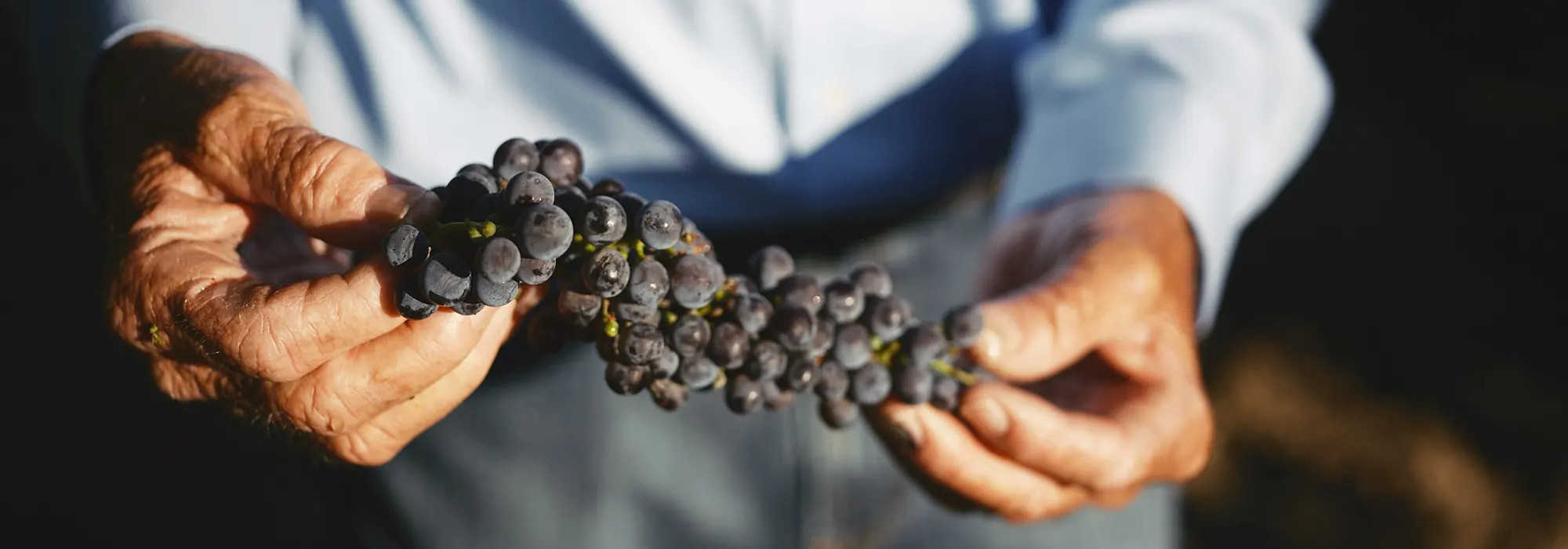



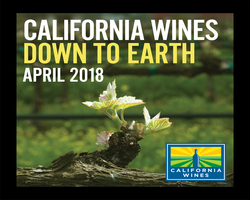
 Avensole Winery
Avensole Winery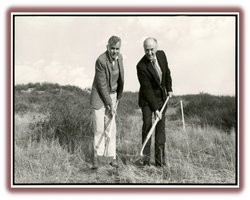 Come celebrate with us! The 50th Anniversary will be celebrated throughout the year and there are multiple ways you can participate.
Come celebrate with us! The 50th Anniversary will be celebrated throughout the year and there are multiple ways you can participate.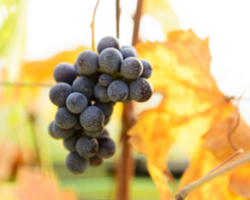 Remember those small, lovely bottles you’ve seen in the dessert wine section of your favorite tasting room or wine store?
Remember those small, lovely bottles you’ve seen in the dessert wine section of your favorite tasting room or wine store?
